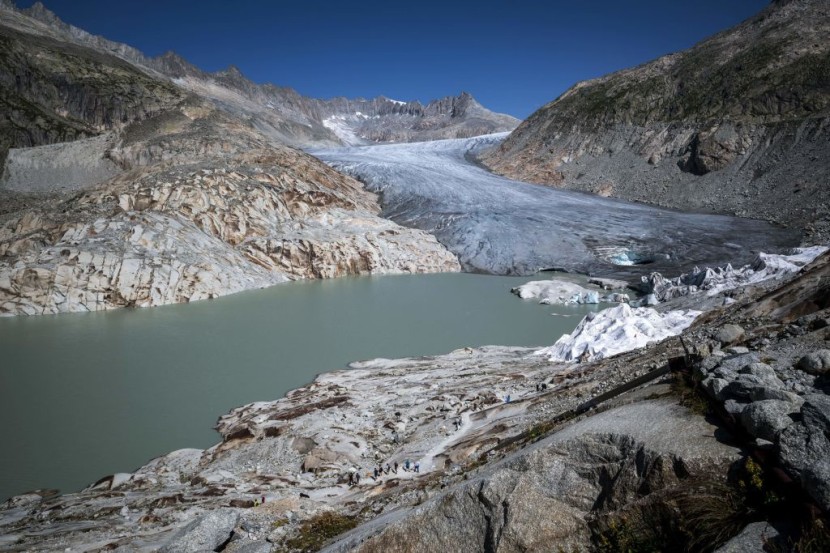
Swiss glaciers were found to have lost 10% of their volume in two catastrophic years, 2022 and 2023, equaling the amount that was lost in 30 years, from 1960 to 1990.
Scientists argued that climate breakdown caused by the burning of fossil fuels is the main culprit of unusually hot summers and winters that have very low snow volume. The situation has caused an acceleration of the melting of the glaciers.
Swiss Glaciers' Lose Volume
The Swiss Academy of Sciences conducted a study that found 4% of Switzerland's total glacier volume disappeared just this year. This is the second-biggest annual decline on record, with the largest being seen in 2022 when there was a 6% drop, which is the biggest seen since measurements started.
Experts have stopped measuring the ice on some glaciers as there was essentially none left on some of them. Glacier Monitoring in Switzerland (Glamos), which monitors 176 glaciers, recently stopped measurements at the St. Annafirn glacier that is located in the central Swiss canton of Uri because nearly all of the ice has melted, as per The Guardian.
The head of Glamos, Matthias Huss, said that there is only some dead ice left, adding that it is a mix of climate change that makes such extreme events even more likely and the very bad combination of meteorological extremes. He warned that at this rate, every year moving forward will be seen as a bad year.
Huss noted that small glaciers were disappearing because of the rate of ice loss, arguing that emissions need to stop for the region to stop losing its ice. However, he added that even if the world manages to keep warming to 1.5 degrees Celsius above pre-industrial levels, only a third of glacier volume in Switzerland is forecast to remain.
He said that this means that all of the small glaciers will be gone either way and that the bigger glaciers will become smaller. However, he emphasized that at least "there will be some ice in the highest regions of the Alps and some glaciers that we can show to our grandchildren."
Worsening Climate Change
Scientists have previously warned that the Swiss glaciers could all but vanish by the end of the century if officials do not take more action to control global warming. Huss noted that there have been strong climate changes in recent years, according to Yahoo News.
Huss stressed that there needs to be efforts to stabilize climate change by bringing down the CO2 emissions to zero as soon as possible. The glaciers that have been impacted by this year's developments were located all across Switzerland, with the ones in the south and the east being particularly hard-hit.
The researchers noted that the average ice thickness loss in the areas was recorded to be up to three meters and they said that it was "considerably higher than the values recorded in the hot summer of 2003."
Furthermore, they found that ice loss was even recorded at high altitudes, which usually does not see any such declines. Glamos said that several meters of ice disappeared in southern Valais and the Engadin Valley at altitudes of more than 3,200 meters, said CNN.
Related Article : Antarctica Hits 'Record-Smashing' Low for Sea Ice, Sparking Concerns







